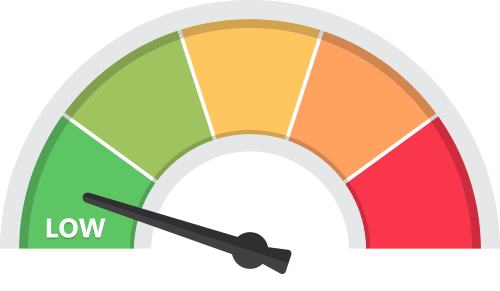What is a Mutual Fund?
To many people, Mutual Funds can seem complicated or intimidating. We are going to try and simplify it for you at its very basic level. Essentially, the money pooled in by a large number of people (or investors) is what makes up a Mutual Fund. This fund is managed by a professional fund manager.
It is a trust that collects money from a number of investors who share a common investment objective. Then, it invests the money in equities, bonds, money market instruments, and/or other securities. Each investor owns units, which represent a portion of the holdings of the fund. The income/gains generated from this collective investment are distributed proportionately amongst the investors after deducting certain expenses, by calculating a scheme’s “Net Asset Value or NAV. Simply put, a Mutual Fund is one of the most viable investment options for the common man as it offers an opportunity to invest in a diversified, professionally managed basket of securities at a relatively low cost.
What are the benefits of investing in Mutual Funds?
Many of us dread the thought of managing our own investments. With a professional fund management company, people are put in charge of various functions based on their education, experience, and skills.
As an investor, you can either manage your finances yourself or hire a professional firm. You opt for the latter when:
- You do not know how to do the job best – many of us hire someone to file our income tax returns, or almost all of us get an architect to do our house.
- You do not have enough time or inclination. It’s like hiring drivers even though we know how to drive.
- When you are likely to save money by outsourcing the job instead of doing it yourself. For going on a journey driving your own vehicle is far costlier than taking a train.
- You can spend your time on other activities of your choice/liking.
Professional fund management is one of the best benefits of Mutual Funds. The infographic on the left highlights all the others. Given these benefits, there is no reason why one should look at any other investment avenue.
Why is investing better than saving?
Imagine a 50-over cricket match in which the #6 batsman walks into bat only in the 5th over. His job is to first ensure he does not lose the wicket, and then focus on scoring runs.
While saving is a must for investing, it is important to save one’s wicket in order to be able to score later. One can save the wicket by playing defensive cricket and avoiding all sorts of shots. But that would result in a very low score. He would need to hit some boundaries by taking certain risks like lofted shots or drives between fielders or cuts and nudges.
Similarly, in order to accumulate large sums to meet one’s financial goals, in order to beat inflation, one must take certain investment risks. Investing is all about taking calculated risks and managing the in same way, not avoiding the risks altogether.
At the same time, in the cricket analogy, in order to stay at the crease as well as score runs, one must take calculated risks and not play rash shots. Taking unnecessary risks is a bad strategy.
So, while saving is necessary, investing is very important to achieve long-term goals.
Aren’t RDs and FDs enough to secure the future?
Recurring Deposits (RDs) and Fixed Deposits (FDs) are some of the most popular savings instruments in our country. They are safe and offer a guaranteed rate of return.
That really depends on what an investor expects from the future. If the investor wants her capital to be safe and earn some reasonable fixed rate of return, irrespective of inflation and taxes, then these may be good enough. However, if the investor wants to earn a positive return even after factoring in inflation and taxes, then these may not be good enough.
If an investor has a large enough corpus to start with and is really not worried about enhancing purchasing power, then RDs and FDs are safe and useful savings and income-generating options. If an investor is more concerned about the safety of the principal and receipt of timely and predictable income, an FD may be ideal.
Why should one invest in Mutual Funds?
One should never invest in Mutual Funds but should invest through them.
To elaborate, we invest in various investment avenues based on our requirements, e.g., for capital growth – we invest in equity shares, for the safety of capital, and for regular income – we buy fixed-income products.
The concern for most investors is: how to know which instruments are best for them. One may not have enough abilities, time, or interest to conduct the research.
To manage investments, one can outsource certain tasks one is unable to do. Anyone can outsource ‘managing one’s investments to a professional firm – the Mutual Fund company. Mutual Funds offer various avenues to fulfil different objectives, which investors can choose from based on one’s unique situations and objectives.
Mutual Fund companies manage all administrative activities including paperwork. They also facilitate accounting and reporting the progress of the investment portfolios through a combination of Net Asset Values (NAVs) and account statements.
Mutual Fund is a great convenience for those who need to invest their money for future requirements. A team of professionals manages the money, and the investors can enjoy the fruits of this expertise without getting involved in mundane tasks.


What are the indicators of risk in a Mutual Fund Scheme?
You must properly evaluate before picking up the right Mutual Fund scheme to invest your hard-earned money. While investors often go by scheme category and top-performing schemes in the category, they ignore risk indicators for these schemes. When you are comparing schemes to choose from, don’t miss out on comparing their riskiness. While there are many risk indicators like Standard Deviation, Beta, and Sharpe Ratio provided in the factsheet of every scheme, the product label is the most basic thing to look for. The risk-o-meter on the label shows the risk level of the fund. This risk-o-meter is a mandatory requirement by SEBI and represents the underlying risk associated with the fund. The six levels of risk ranging from low, low to moderate, to moderate, moderately high, high, and very high have been linked to various categories of mutual funds depending on the level of risk in their portfolio. Since this kind of risk categorization has been defined by SEBI, all mutual funds are bound to categorize similar kinds of funds into the same risk category.
Apart from the risk-o-meter which gives an overview of the fund’s riskiness, one can also look at more specific risk indicators provided in the factsheet. Standard Deviation measures the range of a fund’s return. A scheme with a higher standard deviation of return indicates its range of performance is wide, implying greater volatility.
Beta measures a fund’s volatility with respect to the market. Beta >1 implies the scheme will be more volatile than the market and Beta <1 means it’ll be less volatile than the market. A beta of 1 indicates the scheme will move in tandem with market volatility.
Sharpe Ratio measures the excess return provided by the fund per unit of risk undertaken. It is a good indicator of risk-adjusted return.
Next time you research which scheme to invest in, don’t forget to evaluate them on the above risk parameters.

